Introduction
Baseball, often heralded as America’s pastime, has predominantly been viewed through a masculine lens. However, the contributions of women to this sport are profound and enduring. From early enthusiasts playing in backyards and local leagues to professional pioneers in the All-American Girls Professional Baseball League (AAGPBL), women’s involvement in baseball has been significant and transformative. This article aims to provide an exhaustive history of women in baseball, focusing particularly on the AAGPBL, its teams, players, and tournaments, and concluding with the league’s legacy and the current state of women in baseball.
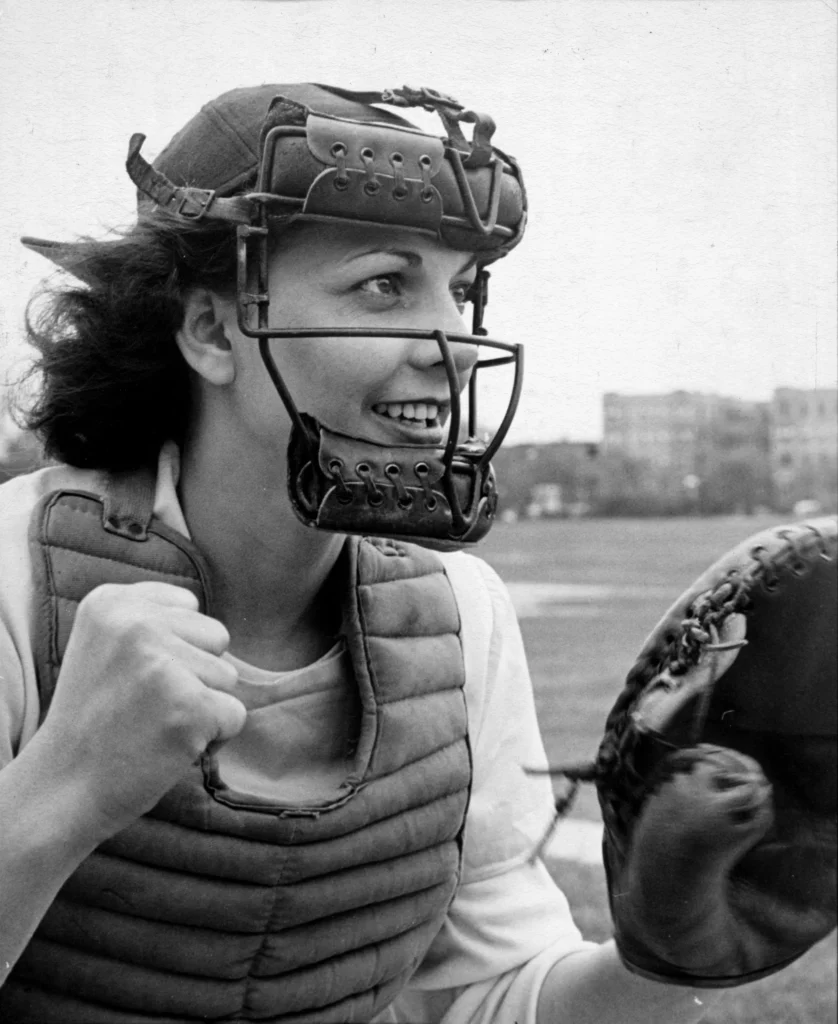
Early Beginnings: Pioneers and Predecessors
The 19th Century: Seeds of Enthusiasm
Women began playing baseball in the United States as early as the 19th century. The first recorded instance of women participating in organized baseball dates back to the 1860s. Colleges like Vassar College in New York established women’s baseball teams, with games primarily played for recreational purposes. These early teams set the stage for future generations, demonstrating that women were equally passionate and capable of excelling in baseball.
Women’s baseball teams at colleges were initially part of a broader movement to include women in sports and physical education. Educators and students alike recognized the importance of athletics in promoting health, discipline, and teamwork. The establishment of these teams often faced societal resistance, as prevailing gender norms dictated that women should focus on more “appropriate” activities. Despite these challenges, women persisted, driven by their love for the game and a desire to prove their athletic capabilities.
The Bloomer Girls: A Precursor to Professionalism
From the 1890s to the 1930s, the Bloomer Girls teams gained prominence. Named after the “bloomer” pants they wore, these teams traveled across the country, often playing against male teams and frequently emerging victorious. The Bloomer Girls played a crucial role in breaking gender barriers and proving that women could compete in baseball at a high level.
The Bloomer Girls teams were not just baseball teams; they were part of a broader social movement advocating for women’s rights and gender equality. These teams provided women with a rare opportunity to travel, earn a living, and gain public visibility. The Bloomer Girls often played against men, which helped to challenge and change societal perceptions of women’s athletic abilities. Players like Alta Weiss, who pitched for the Weiss All-Stars, became local celebrities, inspiring countless young women to take up the sport.
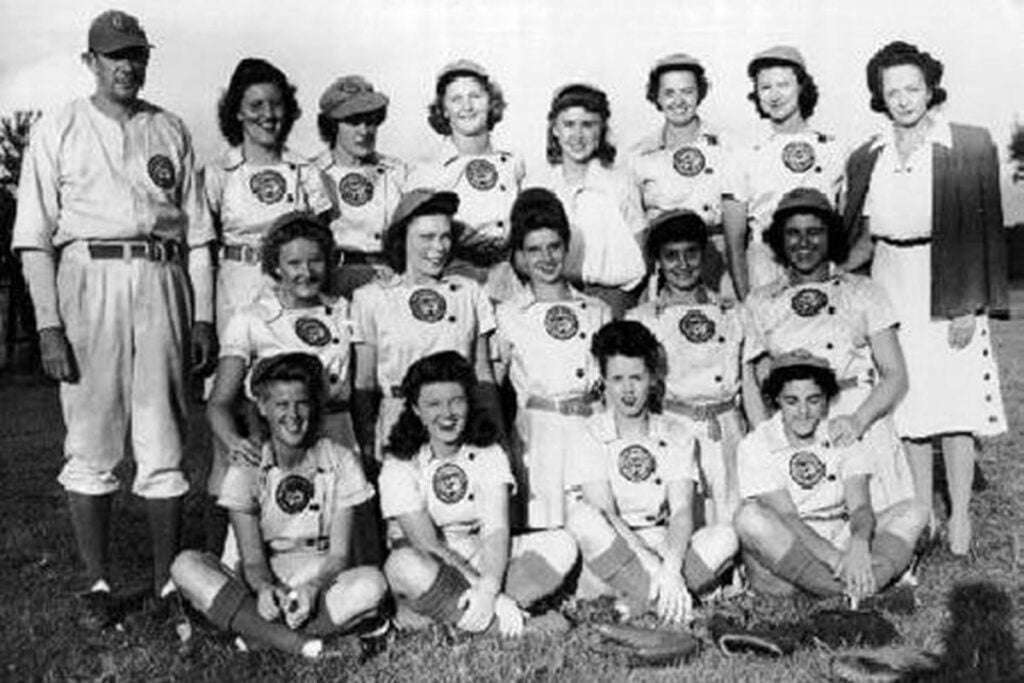
The Formation of the AAGPBL
World War II: A Catalyst for Change
The advent of World War II saw many male baseball players enlisting in the military, which led to a decline in Major League Baseball attendance. In response, Philip K. Wrigley, owner of the Chicago Cubs, initiated the creation of the All-American Girls Professional Baseball League (AAGPBL) in 1943. Wrigley envisioned the league as a way to maintain public interest in baseball while the war effort absorbed much of the nation’s male athletic talent.
Wrigley’s vision was to create a league that could capture the imagination of the American public. He hired a team of scouts and promoters to find the best female baseball talent across the country. The formation of the AAGPBL was a bold experiment that required significant investment in marketing, training, and facilities. Wrigley’s commitment to the league’s success was evident in his efforts to ensure the players were not only skilled athletes but also embodied the ideal of the “All-American girl,” combining athletic prowess with femininity.
Inaugural Season: The Birth of a League
The AAGPBL commenced in 1943 with four teams: the Kenosha Comets, Racine Belles, Rockford Peaches, and South Bend Blue Sox. The league was initially a hybrid of softball and baseball, featuring an underhand pitching style and a larger ball, but it gradually transitioned to standard baseball rules.
The inaugural season was a learning experience for both players and organizers. The hybrid rules were designed to make the game more familiar to fans of both softball and baseball. Despite initial skepticism, the league quickly gained popularity. The AAGPBL’s success was due in part to the high caliber of its players, many of whom had played in semi-professional softball leagues before joining the AAGPBL. The league’s emphasis on both athletic skill and feminine charm helped it to attract a wide audience, including families and young women aspiring to become athletes.



Teams and Players: Icons of the AAGPBL
The Original Teams
Kenosha Comets
The Kenosha Comets, based in Kenosha, Wisconsin, were one of the original teams in the AAGPBL. Known for their strong pitching and strategic play, the Comets quickly became a competitive force in the league.
The Comets’ roster included players like Helen Nicol, a dominant pitcher known for her powerful underhand throws, and Shirley Jameson, an exceptional base runner. The team’s strategic play and solid defense made them a tough opponent in every game. The Comets’ games were characterized by close scores and thrilling finishes, earning them a loyal fan base in Kenosha and beyond.
Racine Belles
The Racine Belles, hailing from Racine, Wisconsin, were renowned for their balanced team dynamic and robust offense. They clinched the league’s first championship in 1943, setting a high standard for subsequent seasons.
The Belles’ success was driven by players like Mary “Bonnie” Baker, a versatile catcher and team leader, and Dorothy Kamenshek, whose batting prowess made her one of the league’s most feared hitters. The Belles’ ability to blend strong offense with strategic defensive play made them a formidable team. Their championship victory in the inaugural season was a testament to their skill and teamwork.
Rockford Peaches
The Rockford Peaches, from Rockford, Illinois, became one of the most iconic teams in the AAGPBL, partly due to their longevity and consistent performance. They won multiple championships and produced numerous standout players.
The Peaches were known for their depth of talent, with stars like Dottie Kamenshek and Lois “Tommie” Barker leading the way. Kamenshek, in particular, was a standout player whose batting average and fielding skills were unmatched. The Peaches’ combination of strong pitching, solid defense, and consistent hitting made them perennial contenders in the league.
South Bend Blue Sox
The South Bend Blue Sox, based in South Bend, Indiana, were known for their resilience and tenacity. They remained competitive throughout the league’s existence, winning championships in the early 1950s.
The Blue Sox featured players like Jean Faut, one of the league’s best pitchers, and Ruth Kramer, a reliable hitter and fielder. The team’s ability to bounce back from tough losses and their determination to win made them a fan favorite. Their championship victories in the early 1950s highlighted their enduring competitiveness and skill.

Expansion and Evolution
As the AAGPBL grew in popularity, more teams were added. By 1948, the league had expanded to ten teams. Some notable additions included:
Fort Wayne Daisies
The Fort Wayne Daisies were a dominant force in the latter years of the AAGPBL, boasting several league championships and standout players, including pitcher Maxine Kline and outfielder Dottie Schroeder.
The Daisies’ success was built on a strong pitching staff and a potent offense. Maxine Kline’s ability to dominate on the mound and Dottie Schroeder’s consistency at the plate made the Daisies a formidable team. Their strategic play and depth of talent allowed them to compete at the highest level year after year.
Grand Rapids Chicks
The Grand Rapids Chicks, based in Grand Rapids, Michigan, were another successful team, known for their strong batting lineup and solid defense. They secured multiple championships in the late 1940s and early 1950s.
The Chicks’ roster included players like Alma Ziegler, a skilled infielder, and Connie Wisniewski, a versatile pitcher and hitter. The team’s ability to combine offensive power with defensive reliability made them a consistent threat in the league. Their championship victories were a testament to their balanced and well-rounded play.
Kalamazoo Lassies
The Kalamazoo Lassies, from Kalamazoo, Michigan, evolved into a competitive team and won the final AAGPBL championship in 1954 before the league disbanded.
The Lassies’ journey from a struggling team to league champions was marked by perseverance and improvement. Key players like June Peppas, a versatile hitter and pitcher, and Carol Habben, a solid outfielder, played crucial roles in the team’s success. Their championship victory in the league’s final season was a fitting end to their journey.



Star Players
Sophie Kurys
Sophie Kurys, a standout player for the Racine Belles, was renowned for her base-stealing prowess. She set an unbroken record with 201 stolen bases in a single season.
Kurys’ speed and agility on the base paths made her a constant threat to opposing teams. Her ability to steal bases at will and her keen sense of timing and strategy were unmatched. Kurys’ record for stolen bases in a season remains one of the most remarkable achievements in baseball history.
Jean Faut
Jean Faut, a pitcher for the South Bend Blue Sox, was one of the league’s most dominant pitchers. She achieved two perfect games and won multiple Player of the Year awards.
Faut’s pitching mastery and consistency set her apart from other pitchers in the league. Her ability to control games and her resilience in high-pressure situations made her a key player for the Blue Sox. Faut’s two perfect games and numerous accolades highlight her as one of the greatest pitchers in AAGPBL history.
Dottie Kamenshek
Dottie Kamenshek, often referred to as “Kammie,” was a first baseman for the Rockford Peaches and is widely regarded as one of the greatest players in the AAGPBL. Her exceptional batting average and defensive skills earned her seven All-Star selections and two batting titles. Kamenshek’s prowess on the field drew admiration from baseball legends like Ted Williams, who lauded her as one of the finest first basemen in baseball history, regardless of gender.
Kamenshek’s contributions to the Peaches’ success and her role as a league ambassador made her an iconic figure in women’s baseball. Her skill, determination, and sportsmanship set a standard for excellence that inspired future generations of female athletes.

The Championships: A Decade of Competition
Early Years: 1943-1945
The inaugural championship series in 1943 saw the Racine Belles triumph over the Kenosha Comets. The following year, the Milwaukee Chicks, a new addition to the league, clinched the championship against the Kenosha Comets. In 1945, the Rockford Peaches began their reign by winning their first championship.
The early years of the AAGPBL were marked by intense competition and high-quality play. Teams were evenly matched, and games often came down to the wire. The Racine Belles’ victory in the inaugural championship set a high standard for future competitions. The Milwaukee Chicks’ success in 1944, despite being a new team, demonstrated the depth of talent in the league. The Rockford Peaches’ championship in 1945 marked the beginning of their dominance in the league.
Peak Years: 1946-1950
During these years, the AAGPBL saw intense competition and a growing fan base. The Rockford Peaches secured championships in 1945, 1948, 1949, and 1950, establishing themselves as a powerhouse in the league. The South Bend Blue Sox won their first championship in 1951.
The peak years of the AAGPBL were characterized by the emergence of dynasties and the rise of individual stars. The Rockford Peaches’ dominance was built on a combination of strong pitching, solid defense, and consistent hitting. Their multiple championships solidified their status as one of the greatest teams in women’s baseball history. The South Bend Blue Sox’s championship in 1951 ended the Peaches’ streak and highlighted the league’s competitive balance.
Decline and Final Years: 1951-1954
The early 1950s marked the beginning of the league’s decline. Despite this, the quality of play remained high. The South Bend Blue Sox won consecutive championships in 1951 and 1952. The Grand Rapids Chicks claimed the title in 1953, and the Kalamazoo Lassies won the final championship in 1954.
The decline of the AAGPBL was due to several factors, including the return of male players from World War II, the rise of television, and changing societal attitudes. Despite these challenges, the league continued to produce high-quality baseball and thrilling championships. The South Bend Blue Sox’s consecutive championships demonstrated their resilience and skill. The Grand Rapids Chicks and Kalamazoo Lassies’ championship victories in the final years of the league highlighted the depth of talent and competitiveness that defined the AAGPBL.

A League of Their Own: The Movie
Production and Release
In 1992, director Penny Marshall brought the story of the AAGPBL to the silver screen with the film “A League of Their Own.” Starring Geena Davis, Tom Hanks, and Madonna, the movie portrayed a fictionalized account of the league’s inaugural season, focusing on the Rockford Peaches.
The film’s production involved extensive research into the history of the AAGPBL, including interviews with former players and visits to historic sites. Penny Marshall aimed to create an authentic portrayal of the league’s early days while also crafting a compelling narrative. The casting of major stars like Geena Davis, Tom Hanks, and Madonna helped to attract a wide audience and generate interest in the film.
Cultural Impact
The film was a critical and commercial success, grossing over $132 million worldwide. It rekindled interest in the AAGPBL and its players, showcasing their contributions to a new generation. The movie’s iconic line, “There’s no crying in baseball!” delivered by Tom Hanks, has since become a part of American pop culture.
“A League of Their Own” played a significant role in preserving the legacy of the AAGPBL and educating the public about this important chapter in sports history. The film’s success also led to a renewed interest in women’s baseball and inspired many young girls to pursue their athletic dreams. The movie’s portrayal of the players’ struggles and triumphs resonated with audiences, highlighting the universal themes of perseverance, teamwork, and the love of the game.


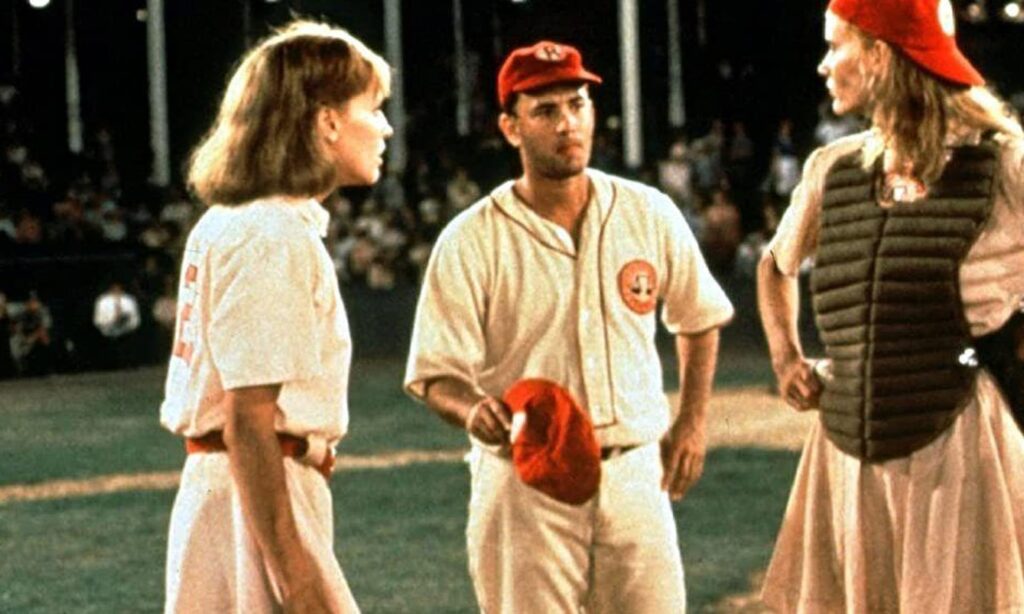

Historical Accuracy
While “A League of Their Own” took creative liberties for dramatic effect, it remained true to the spirit and significance of the AAGPBL. The character of Dottie Hinson, portrayed by Geena Davis, was inspired by real-life players like Dottie Kamenshek and Lavonne “Pepper” Paire Davis.
The film’s blend of fact and fiction allowed it to tell a compelling story while also honoring the real-life achievements of the AAGPBL players. The attention to detail in the depiction of the games, uniforms, and era-specific settings helped to create an authentic atmosphere. The film’s success brought long-overdue recognition to the women who played in the AAGPBL and ensured that their contributions to baseball would not be forgotten.

A League of Their Own: The TV Show
Development and Release
In 2022, Amazon Prime Video released a television adaptation of “A League of Their Own,” created by Abbi Jacobson and Will Graham. The series aimed to provide a more in-depth and contemporary exploration of the AAGPBL, delving into themes of race, sexuality, and gender.
The development of the TV series involved a thorough reimagining of the original film’s narrative. Abbi Jacobson and Will Graham sought to address modern audiences’ expectations for diverse and inclusive storytelling. The show’s creators consulted with historians, former players, and experts in gender and race studies to ensure an accurate and nuanced portrayal of the period.


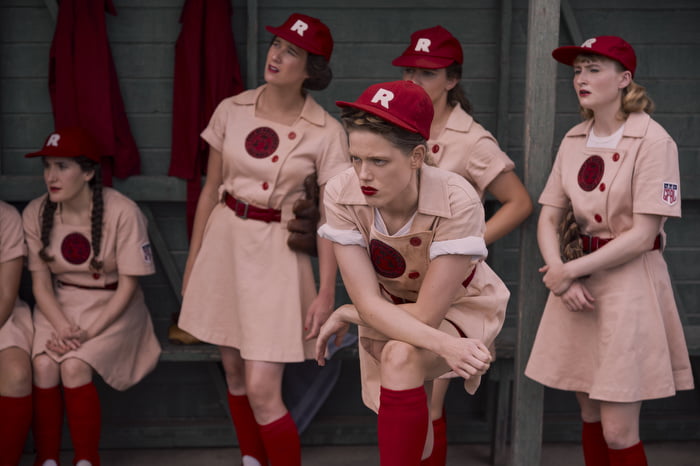
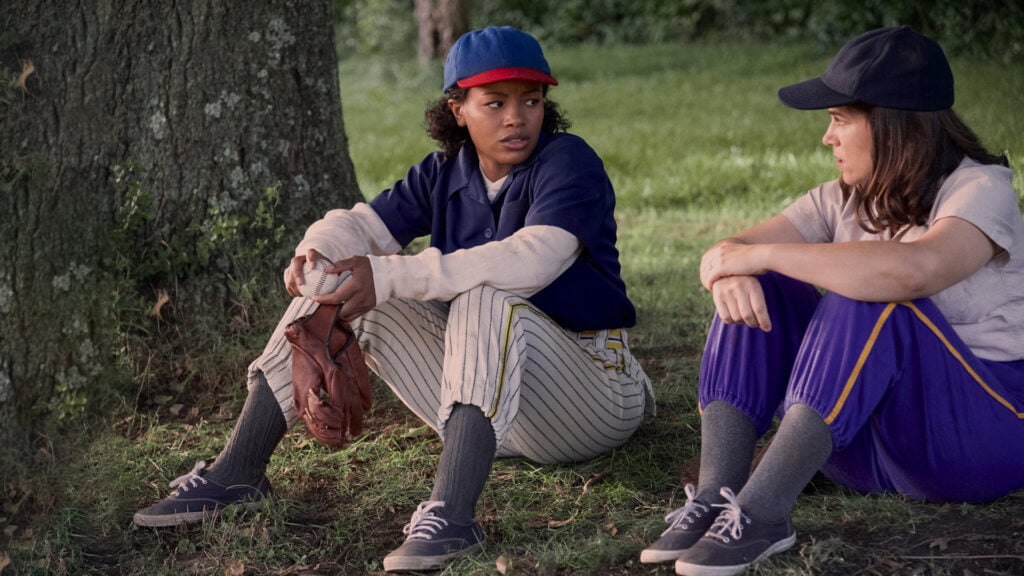
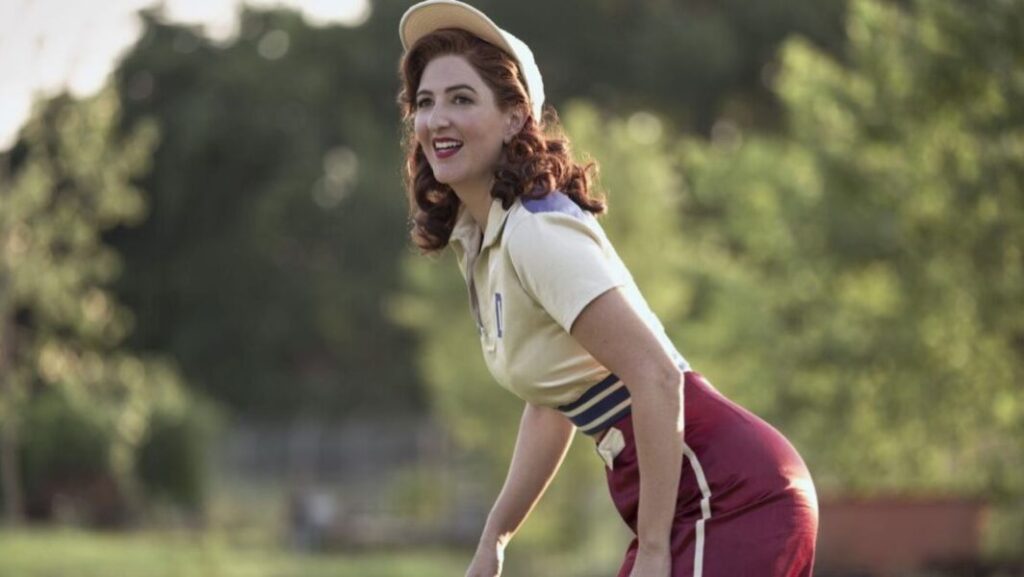
Cast and Characters
The TV series featured a diverse cast, including Abbi Jacobson as Carson Shaw, a character inspired by Dottie Hinson, and Chanté Adams as Maxine Chapman, representing the struggles of Black female athletes during the era. The show also introduced LGBTQ+ storylines, reflecting the complexities of identity and societal norms in the 1940s.
The casting of the TV series aimed to reflect the diversity of experiences within the AAGPBL and the broader context of American society during the 1940s. Abbi Jacobson’s portrayal of Carson Shaw captured the spirit of the original film’s protagonist while introducing new dimensions to the character. Chanté Adams’ role as Maxine Chapman highlighted the intersectional challenges faced by Black women in sports, adding depth and richness to the narrative.
Reception and Impact
The series was praised for its fresh perspective and commitment to inclusivity. It provided a platform to explore stories that were previously overlooked, offering a richer and more comprehensive view of the AAGPBL’s history.
The TV series received critical acclaim for its storytelling, performances, and production values. It succeeded in bringing new attention to the history of the AAGPBL while also addressing contemporary social issues. The show’s impact extended beyond entertainment, sparking discussions about representation, inclusion, and the ongoing fight for equality in sports.

The Legacy of the AAGPBL
Honoring the Trailblazers
The AAGPBL’s legacy is preserved through various means, including the AAGPBL Players Association, which was formed in 1982 to reunite former players and promote their contributions. The association organizes reunions, participates in public speaking engagements, and works to keep the history of the league alive.
The AAGPBL Players Association plays a crucial role in ensuring that the stories and achievements of the league’s players are not forgotten. The organization’s efforts to educate the public and celebrate the league’s history have helped to secure the AAGPBL’s place in the annals of baseball history. Through reunions and public events, the association fosters a sense of community and continuity among former players and their families.
Hall of Fame Recognition
In 1988, the National Baseball Hall of Fame and Museum in Cooperstown, New York, opened an exhibit dedicated to the AAGPBL. This recognition cemented the league’s importance in baseball history and provided a permanent space to honor its players and their achievements.
The Hall of Fame exhibit includes artifacts, memorabilia, and interactive displays that tell the story of the AAGPBL. This recognition by one of baseball’s most prestigious institutions underscores the league’s significance and ensures that its contributions will be remembered by future generations. The exhibit also serves as an educational resource, highlighting the challenges and triumphs of the women who played in the league.
Influence on Modern Women’s Baseball
The AAGPBL paved the way for future generations of female athletes. Today, organizations like Baseball For All and the International Women’s Baseball Center work to promote and develop women’s baseball, drawing inspiration from the AAGPBL’s legacy.
The AAGPBL’s influence can be seen in the growing opportunities for women in baseball at all levels, from youth leagues to international competitions. Organizations like Baseball For All advocate for gender equity in sports and provide support and resources for young female athletes. The International Women’s Baseball Center works to preserve the history of women’s baseball and promote its future growth. These organizations continue the AAGPBL’s legacy by championing the cause of women in baseball and ensuring that their contributions are recognized and valued.
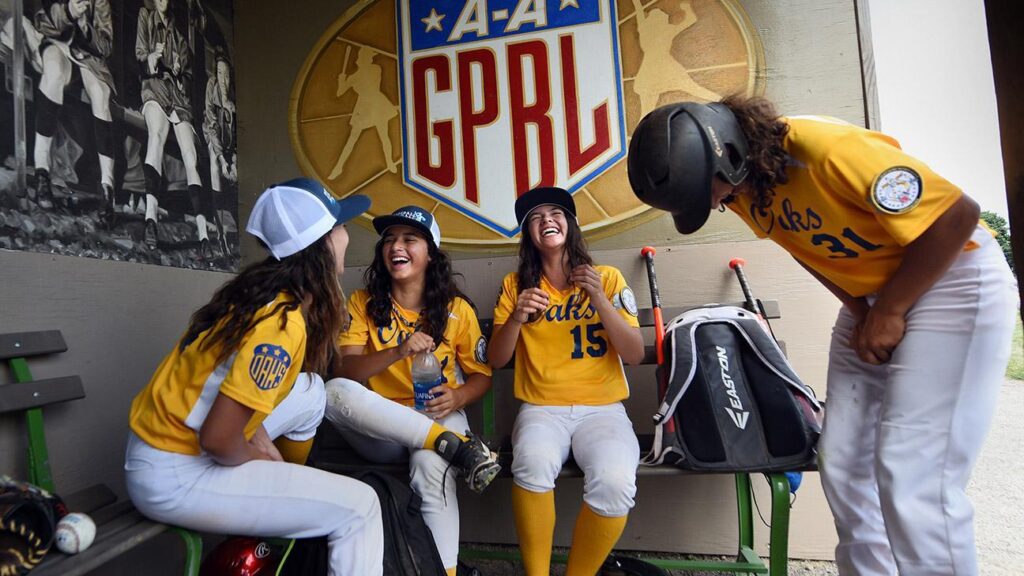
Women in Baseball Today
Modern Opportunities
The opportunities for women in baseball have expanded significantly since the days of the AAGPBL. Women now participate in various capacities, from playing and coaching to holding front office positions in Major League Baseball (MLB) organizations.
The presence of women in professional baseball roles is a testament to the progress made since the AAGPBL era. Women like Kim Ng, who became the first female general manager in MLB history with the Miami Marlins, exemplify the breaking of barriers in the sport. Female coaches and executives are becoming more common, and their contributions are increasingly recognized and valued.
International Play
Women’s baseball has grown on an international scale, with competitions such as the Women’s Baseball World Cup. Countries like Japan, Canada, and Australia have developed strong women’s baseball programs, contributing to the sport’s global appeal.
International competitions provide a platform for female baseball players to showcase their talents on the world stage. The Women’s Baseball World Cup, organized by the World Baseball Softball Confederation (WBSC), has become a premier event, featuring top teams from around the globe. Countries like Japan, which has a strong tradition of women’s baseball, consistently field competitive teams and have helped to raise the profile of the sport internationally.
Barriers and Progress
Despite significant progress, women in baseball still face substantial challenges. The fight for equal opportunities, recognition, and pay continues. However, the increasing visibility of women in baseball and the growing support from organizations like Baseball For All are positive signs of change.
The barriers faced by women in baseball include limited access to facilities, fewer opportunities for competitive play, and disparities in funding and media coverage. However, advocacy efforts and the growing success of female athletes are helping to break down these barriers. Initiatives to promote gender equity in sports and create more opportunities for women are gaining momentum, and the future of women in baseball looks promising.
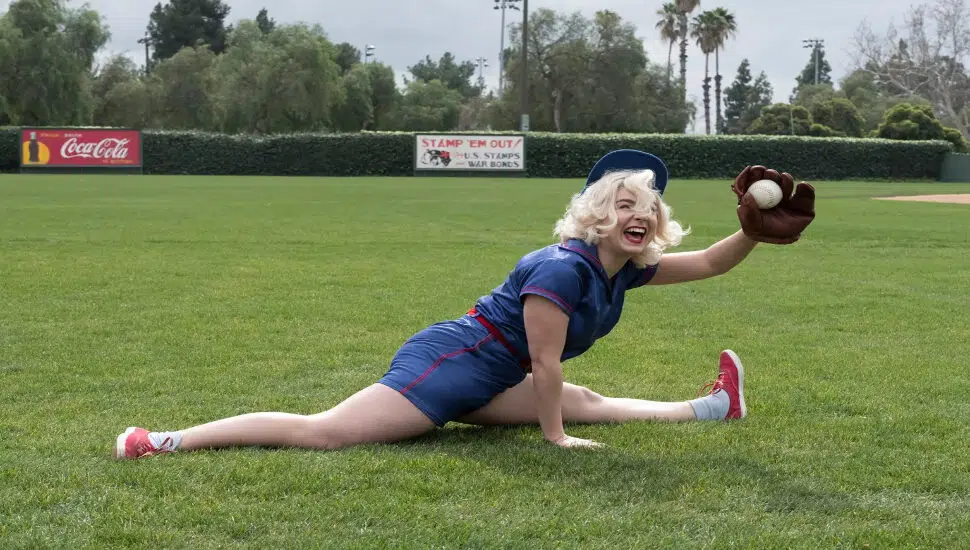
Conclusion
The history of women in baseball is a testament to resilience, passion, and skill. From the early days of the Bloomer Girls to the pioneering AAGPBL and the ongoing efforts to expand opportunities for women in the sport, the journey has been long and arduous. Yet, the legacy of the AAGPBL and the current advancements in women’s baseball demonstrate a promising future. The contributions of women to baseball are undeniable, and their continued presence enriches the sport immeasurably.
The story of women in baseball is one of breaking barriers and challenging norms. The pioneers of the past paved the way for the achievements of today, and the ongoing efforts to promote and support women in baseball ensure that the legacy of the AAGPBL will continue to inspire future generations. The history of women in baseball is not just a story of sports but a story of perseverance, equality, and the unyielding pursuit of dreams.






